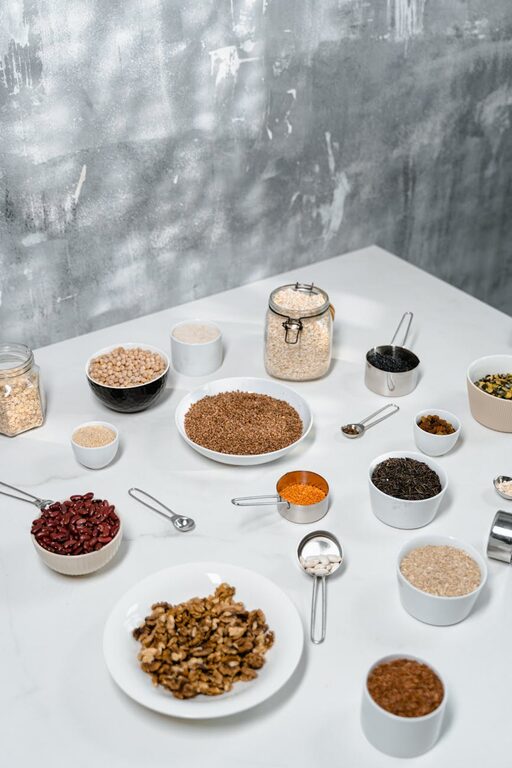Planning meals from pantry staples is a smart way to make cooking more convenient, reduce grocery bills, and cut down on food waste. Whether your pantry is stocked with basics like canned beans, pasta, rice, or a variety of spices, you can whip up tasty and nutritious meals without a trip to the store. In this post, we’ll explore practical tips and techniques to help you plan meals around the ingredients you already have.
Why Plan Meals from Pantry Staples?
Using pantry staples to plan meals offers several benefits:
– Saves money: Buying in bulk and using what you already have reduces grocery expenses.
– Reduces food waste: Regularly using staples prevents them from expiring unused.
– Saves time: No need to run to the store last minute.
– Boosts creativity: Encourages experimenting with flavors and combinations.
Step 1: Take Inventory of Your Pantry
Before deciding what to cook, it’s essential to know what you have.
How to Conduct a Pantry Inventory
– Empty shelves: Remove items and group similar foods together (grains, canned goods, spices).
– Check expiration dates: Discard or prioritize items nearing expiry.
– Note quantities: How much rice, beans, pasta, or flour do you have?
– List proteins and canned goods: Tuna, beans, lentils, or canned vegetables can be meal bases.
– Review spices and condiments: These add flavor and variety.
Tip: Keep an updated list on your phone or a whiteboard in the kitchen for quick reference.
Step 2: Identify Meal Building Blocks
Pantry staples often fall into different categories that can be combined to form complete meals.
Typical Pantry Categories
– Grains and starches: rice, pasta, quinoa, oats, couscous
– Legumes and beans: canned or dry beans, lentils, chickpeas
– Canned and jarred goods: tomatoes, sauces, vegetables, broth
– Proteins: canned tuna/salmon, peanut butter
– Spices and herbs: garlic powder, chili flakes, dried oregano
– Oils and vinegars: olive oil, vegetable oil, balsamic vinegar
Understanding these groups helps you mix and match ingredients effectively.
Step 3: Choose Recipes Based on Staples
With your inventory and meal building blocks in mind, select recipes or create your own.
Easy Recipe Ideas from Pantry Staples
– Pasta with Tomato Sauce: Use pasta, canned tomatoes, garlic powder, and olive oil.
– Rice and Beans Bowl: Combine rice, canned beans, spices, and a splash of vinegar or hot sauce.
– Lentil Soup: Use dry lentils, canned broth, and spices.
– Chickpea Curry: Chickpeas can be cooked with coconut milk (if available) and curry powder.
– Tuna Salad: Mix canned tuna with olive oil, herbs, and serve on crackers or bread.
– Oatmeal with Nuts and Dried Fruit: For a quick breakfast.
Tip: Search online with your specific pantry items to find versatile recipes matching your ingredients.
Step 4: Plan Your Meals for the Week
Now that you have ideas, it’s helpful to map out meals to make grocery shopping and prep easier.
Meal Planning Tips
– Batch cook: Prepare larger portions to have leftovers for busy days.
– Mix and match: Rotate between grain-based, legume-based, and protein-focused dishes.
– Incorporate fresh items: If possible, add fresh vegetables or fruits to complement pantry staples.
– Adjust serving sizes: Plan meals according to the number of people you’re feeding.
Example Week Meal Plan Using Pantry Staples:
| Day | Meal |
|———|——————————-|
| Monday | Pasta with tomato garlic sauce |
| Tuesday | Rice and bean burrito bowls |
| Wednesday| Lentil soup with bread |
| Thursday| Chickpea curry with rice |
| Friday | Tuna salad on crackers |
| Saturday| Oatmeal breakfast, veggie stir-fry (optional fresh) |
| Sunday | Leftovers or pantry soup |
Step 5: Organize Your Pantry for Easy Access
Keeping your pantry organized can make meal planning and cooking faster.
Pantry Organization Tips
– Use clear, labeled containers for dry goods.
– Group items by type or meal use.
– Place frequently used items at eye level.
– Keep spices in a dedicated rack.
– Rotate stock so older items get used first.
Bonus Tips for Success
– Keep a basic spice kit: Salt, pepper, garlic powder, cumin, chili flakes, dried herbs.
– Freeze extras: If you buy fresh produce in bulk, freeze portions for later.
– Improvise: Don’t be afraid to substitute ingredients.
– Plan around preferences: Customize recipes to your taste.
– Stay flexible: Adapt your plan based on what you have and what’s on sale.
Conclusion
Planning meals from pantry staples is a practical approach that saves time, money, and reduces waste. With a bit of organization, creativity, and simple meal planning strategies, you can turn shelf-stable ingredients into delicious and satisfying meals every day. Start by taking inventory, grouping staples, choosing recipes, and mapping out your weekly menu. Enjoy the ease and confidence that comes with knowing your pantry can fuel your kitchen adventures any day!

